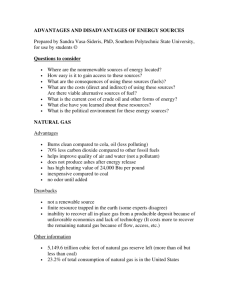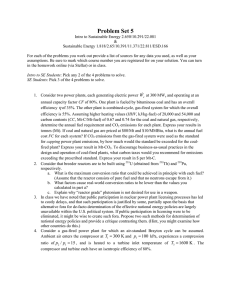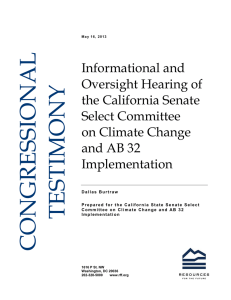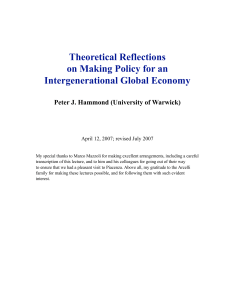What the President’s Climate Plan Means for Natural Gas Commentary
advertisement
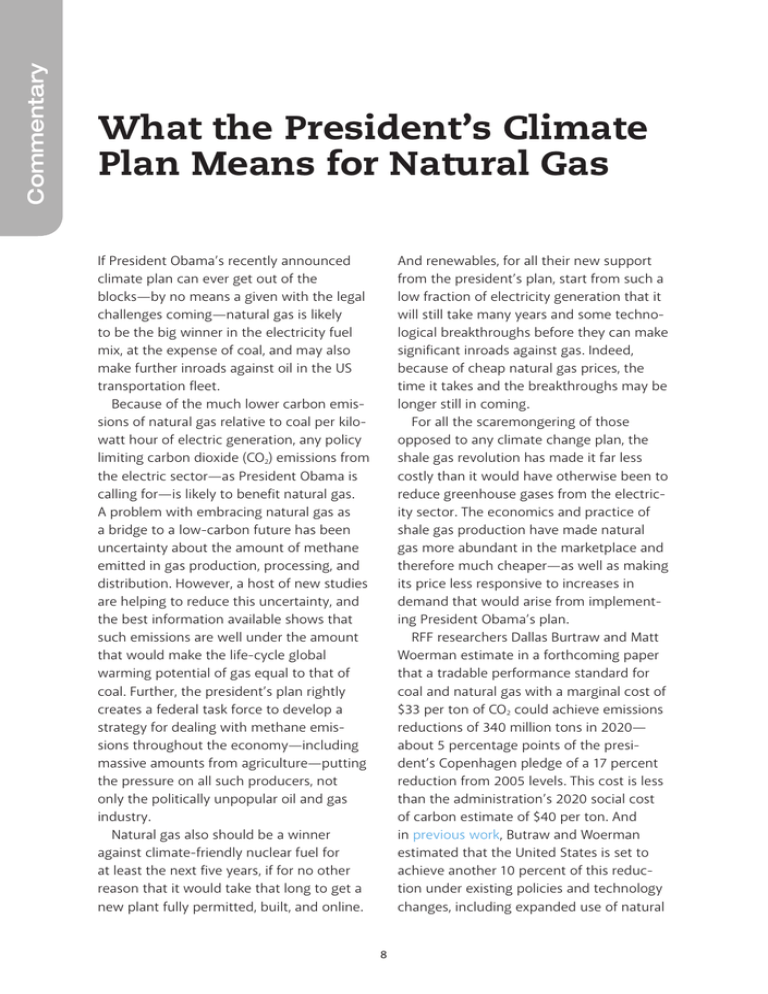
Commentary What the President’s Climate Plan Means for Natural Gas If President Obama’s recently announced climate plan can ever get out of the blocks—by no means a given with the legal challenges coming—natural gas is likely to be the big winner in the electricity fuel mix, at the expense of coal, and may also make further inroads against oil in the US transportation fleet. Because of the much lower carbon emissions of natural gas relative to coal per kilowatt hour of electric generation, any policy limiting carbon dioxide (CO2) emissions from the electric sector—as President Obama is calling for—is likely to benefit natural gas. A problem with embracing natural gas as a bridge to a low-carbon future has been uncertainty about the amount of methane emitted in gas production, processing, and distribution. However, a host of new studies are helping to reduce this uncertainty, and the best information available shows that such emissions are well under the amount that would make the life-cycle global warming potential of gas equal to that of coal. Further, the president’s plan rightly creates a federal task force to develop a strategy for dealing with methane emissions throughout the economy—including massive amounts from agriculture—putting the pressure on all such producers, not only the politically unpopular oil and gas industry. Natural gas also should be a winner against climate-friendly nuclear fuel for at least the next five years, if for no other reason that it would take that long to get a new plant fully permitted, built, and online. And renewables, for all their new support from the president’s plan, start from such a low fraction of electricity generation that it will still take many years and some technological breakthroughs before they can make significant inroads against gas. Indeed, because of cheap natural gas prices, the time it takes and the breakthroughs may be longer still in coming. For all the scaremongering of those opposed to any climate change plan, the shale gas revolution has made it far less costly than it would have otherwise been to reduce greenhouse gases from the electricity sector. The economics and practice of shale gas production have made natural gas more abundant in the marketplace and therefore much cheaper—as well as making its price less responsive to increases in demand that would arise from implementing President Obama’s plan. RFF researchers Dallas Burtraw and Matt Woerman estimate in a forthcoming paper that a tradable performance standard for coal and natural gas with a marginal cost of $33 per ton of CO2 could achieve emissions reductions of 340 million tons in 2020— about 5 percentage points of the president’s Copenhagen pledge of a 17 percent reduction from 2005 levels. This cost is less than the administration’s 2020 social cost of carbon estimate of $40 per ton. And in previous work, Butraw and Woerman estimated that the United States is set to achieve another 10 percent of this reduction under existing policies and technology changes, including expanded use of natural 8 © Patsy Lynch/Retna Ltd./Corbis Commentary gas. President Obama's new plan for utilities could efficiently close this remaining gap. Turning to the transportation sector, more than half of all new refuse trucks run on natural gas, and demand is growing for liquefied natural gas to fuel long-haul trucks. Whether natural gas is a climate change winner over diesel fuel is still an open question, but backing out oil from the energy mix has been a goal of every US president since Nixon, at least. The president’s plan has positives and negatives for the natural gas upstart in transportation (currently at only 1 percent share of transportation fuels). On the positive side, the president endorsed natural gas as a transport fuel. Less clear is his call for tighter fuel economy standards for trucking. If manufacturers can increase diesel fuel economy at relatively low cost, this might give an advantage to diesel. How natural gas trucks are credited for their lower carbon emissions is also important. All in all, the president’s plan is good for reducing greenhouse gases and good for natural gas, relative to the status quo. Even so, implementing a carbon tax on all sectors of the economy, or even just the electricity sector, would save costs by allocating emissions reductions where they are cheapest to obtain. Given the plan's benefits to natural gas and relatively benign position on oil, the oil and gas industry ought to get behind it, while simultaneously signaling their preference for a carbon tax. —Alan J. Krupnick This commentary originally appeared on RFF’s blog, Common Resources. Read more at www.common-resources.org. FURTHER READING Burtraw, Dallas, and Matthew Woerman. 2012. US Status on Climate Change Mitigation. Discussion paper 12-48. Washington, DC: RFF. 9


